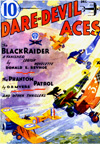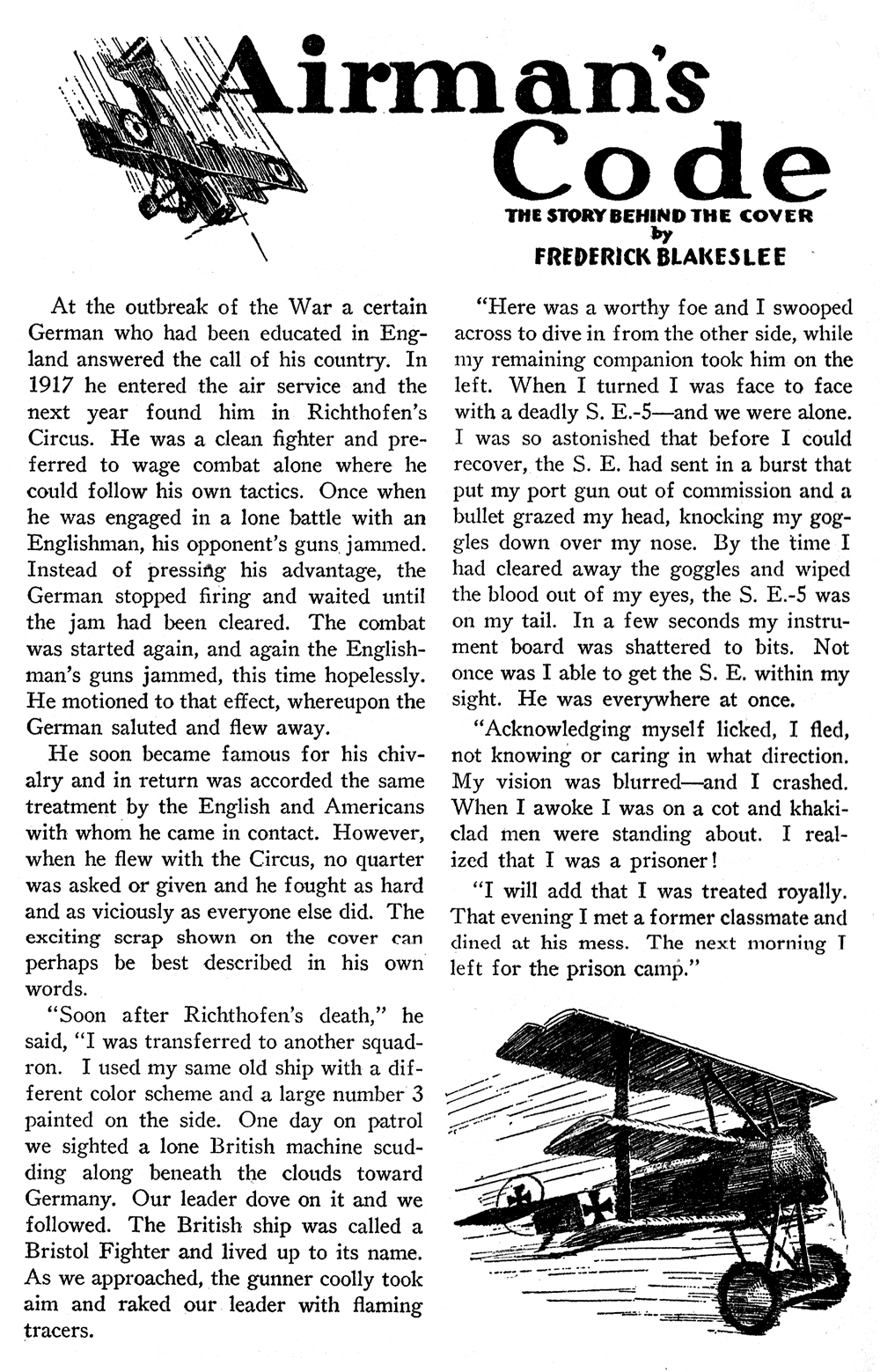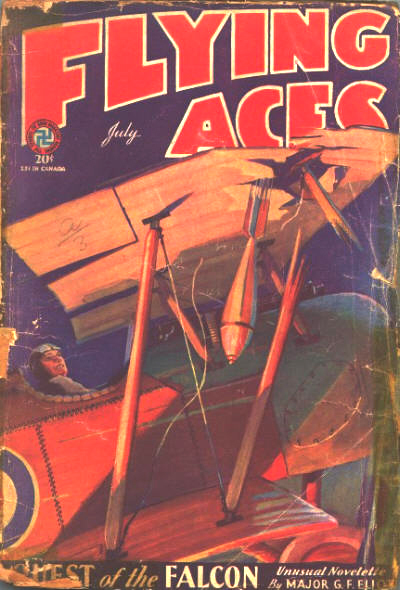“Lives of the Aces in Pictures – Part 22: Major Reed G. Landis” by Eugene Frandzen
From May 1932 through March 1936, Flying Aces ran a pictorial feature illustrated by Eugene Frandzen on the ” Each month they featured a different ace from The Great War—telling his story. Very similar to Alden McWilliams’ “They Had What It Takes” which would run in the magazine after LOTAIP had run it’s course. When Flying Aces was a traditional pulp magazine size of 7×10″, it was a two page feature, but when they changed formats and went with a bedsheet size, the feature became one page.
This week we have the twenty-second installment featuring the American aviation Ace, Major Reed Gresham Landis! Landis was flying with the RFC when he scored his dozen victories, all from an S.E.5. Landis was awarded the British Distinguished Flying Cross and the American Distinguished Service Cross. He would survive the war and go on to become chairman of the American Legion during the 1920’s, but returned to service in 1942 where he rose to the rank of colonel—stationed in Washington, D.C.
He passed away May 30th, 1975, aged 78 near Hot Springs, Arkansas.
- Download “Lives of the Aces in Pictures – Part 22: Major Reed G. Landis
(March 1934, Flying Aces)





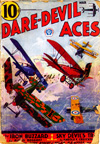
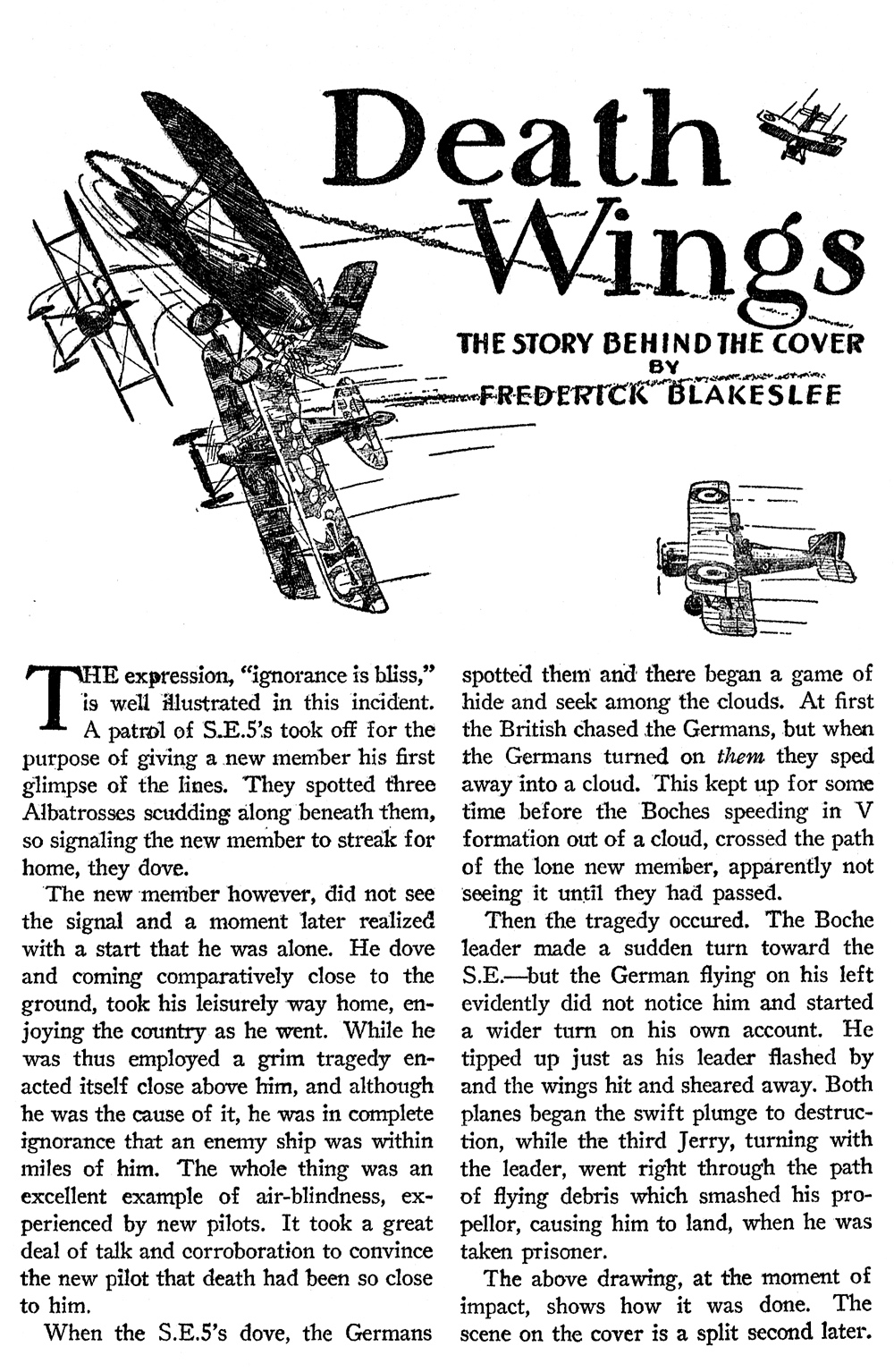
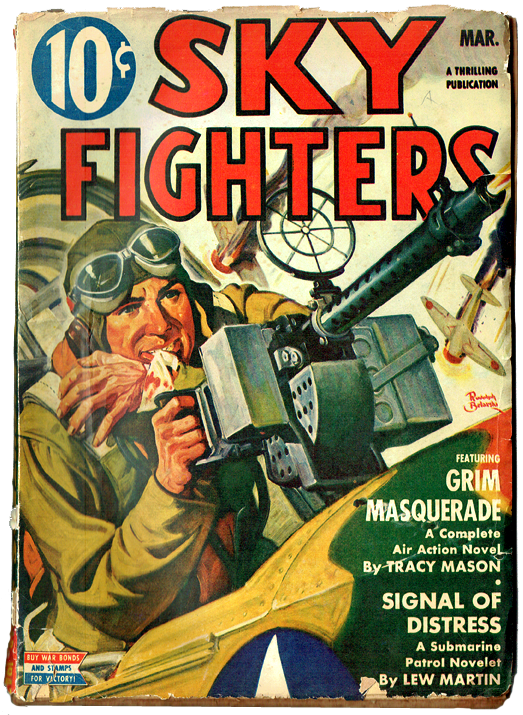 Harold F. Cruickshank’s hero of the hell skies over the Western front returns to action once again in another WWII adventure. Bill Dawe had to change his name and lie about his age to join the RAF’s fight against Hitler’s Luftwaffe. Restricted from fighting, The Sky Devil trains a new generation of eager aces, including his own son until the 77th is suddenly and brutally attacked! This is the second of four WWII Sky Devil stories from Harold F. Cruickshank.
Harold F. Cruickshank’s hero of the hell skies over the Western front returns to action once again in another WWII adventure. Bill Dawe had to change his name and lie about his age to join the RAF’s fight against Hitler’s Luftwaffe. Restricted from fighting, The Sky Devil trains a new generation of eager aces, including his own son until the 77th is suddenly and brutally attacked! This is the second of four WWII Sky Devil stories from Harold F. Cruickshank.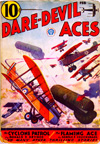
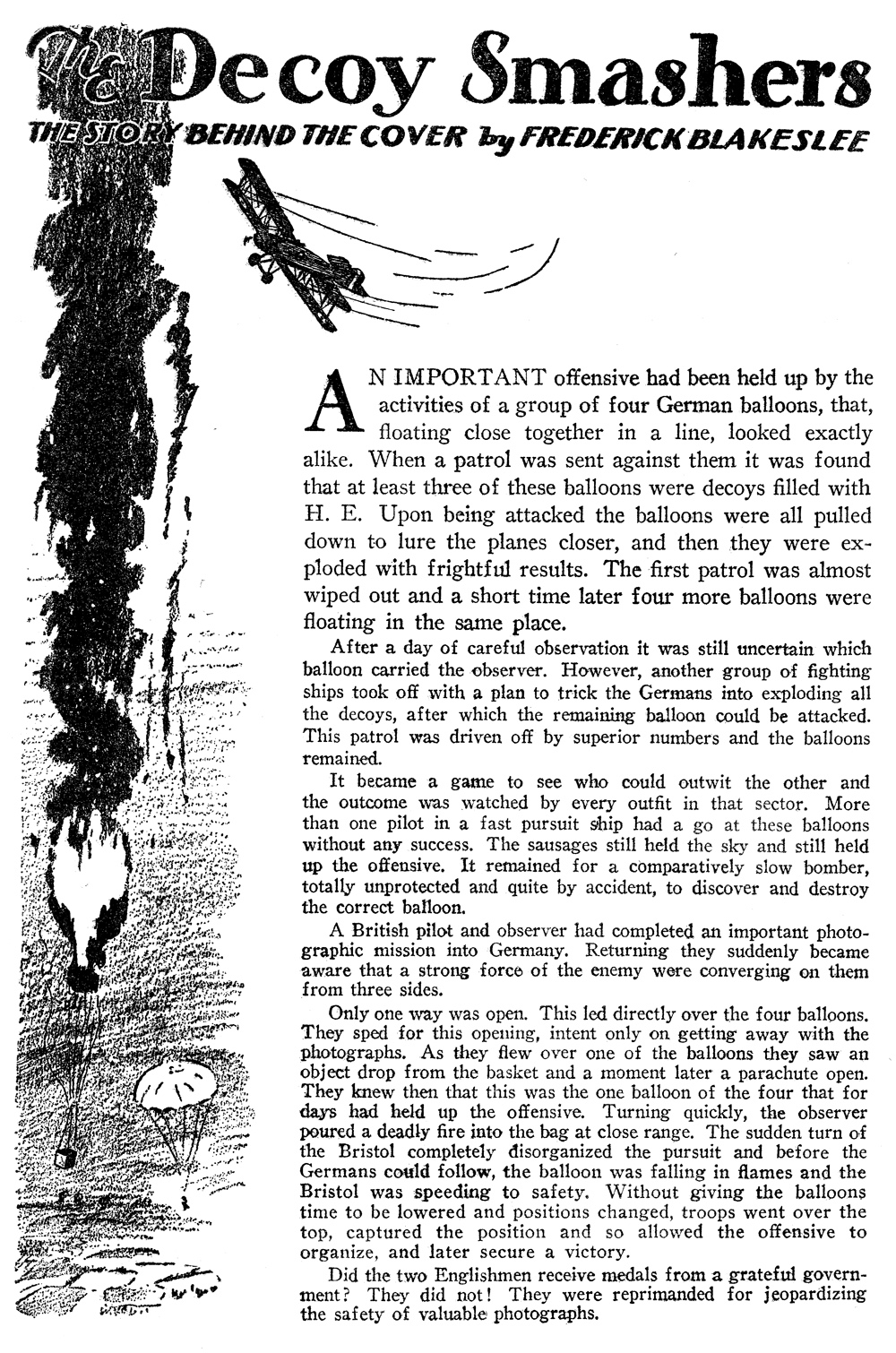
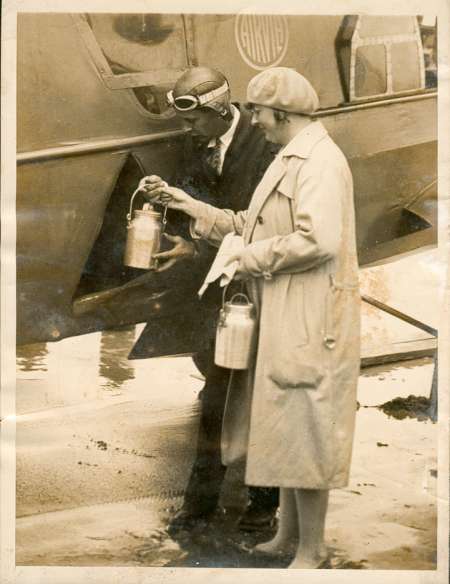 We have arrived at the final installment of Alden McWilliam’s illustrated biographies he did for Flying Aces Magazine—They Had What It Takes. For this last article he features world famous navigator
We have arrived at the final installment of Alden McWilliam’s illustrated biographies he did for Flying Aces Magazine—They Had What It Takes. For this last article he features world famous navigator 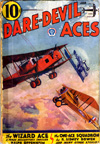
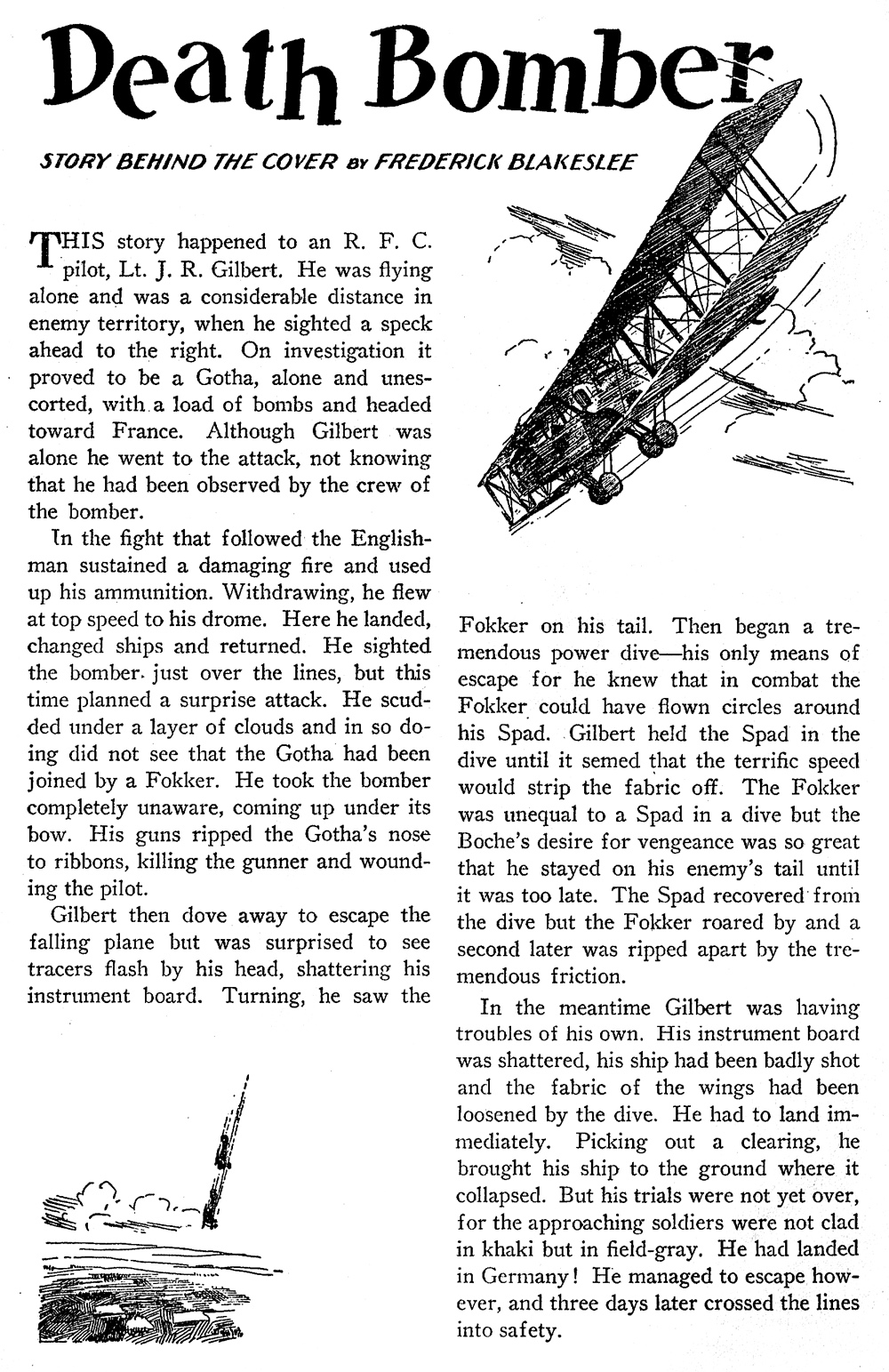
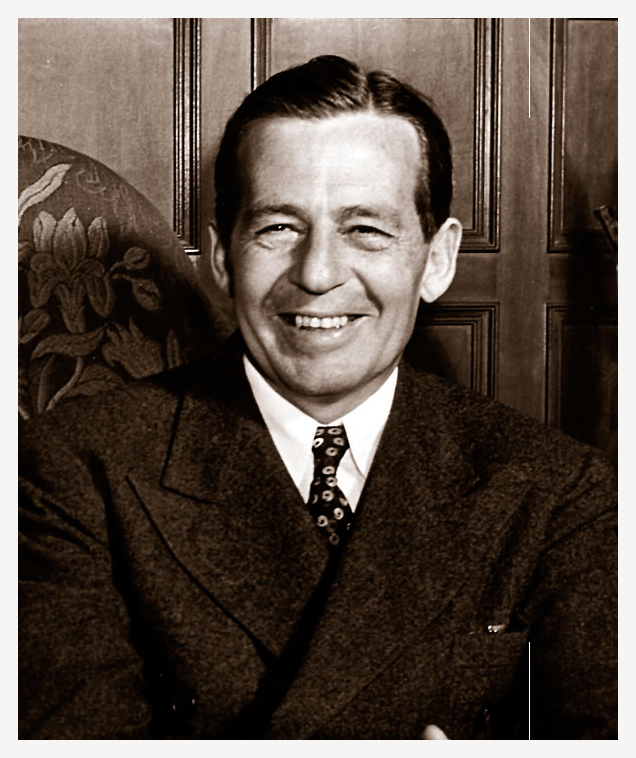 Alden McWilliam’s illustrated biographies he did for Flying Aces Magazine. And this time around we have that giant of American Aviation—
Alden McWilliam’s illustrated biographies he did for Flying Aces Magazine. And this time around we have that giant of American Aviation—